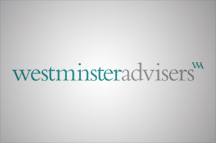 We at Westminster Advisers have found 2014 the most fascinating in our careers, and we’d like to tell you why: because we’ve experienced a big underlying shift in politics, which makes minority government next year much more likely.
We at Westminster Advisers have found 2014 the most fascinating in our careers, and we’d like to tell you why: because we’ve experienced a big underlying shift in politics, which makes minority government next year much more likely.
This January, polls suggested that when next year’s election came around, we’d see a reversion back to majority government after four years of coalition rule, and a return to two-party politics. Now, 12-months on, it’s a very different picture. A minority Labour or Conservative government, supported by smaller parties, looks increasingly likely.
Smaller parties, previously considered on the fringe of politics, will potentially have immense bargaining power. Let’s face it, they’ve stolen the march this year. How has this happened? Read the report below or click here for more details.
Labour’s lead disappears
Labour started 2014 with a 10-point lead at 40%, but this has eroded throughout the year and they’re now tied to the Conservatives at 32%. The party has failed to present a coherent set of policies and failed to win the trust of the voters on the economy. Ed Miliband is seen as a weak and accident-prone leader, who has difficulty inspiring voters and his own backbenchers.
Conservatives’ stable but terrible year
The Conservatives’ share of the vote has been steady throughout the year, starting on 31% and ending on 32%. But that belies a very tough year for the party, with the loss of two MPs to UKIP, coming 3rd in the European elections (an all-time low for the party in a national election), and with seemingly popular measures, such as their recent stamp duty announcement, failing to translate into a boost in support.
Liberal Democrats hold on tight
The Lib Dems have seen their level of support stabilise this year, rating between 7-9% for most of the year, though they’re now being out-polled by the Greens. The party’s support is geographically clustered, which may allow it to retain a disproportionate number of seats. The first past the post electoral system, which the party has been critical of for so long, may be the Lib Dems’ saviour.
The march of the minority parties
In summary, where we’ve ended up in wintery December is that the two biggest parties are unable to attract more than 31-32% of voter support, with the Lib Dems stabilising at a mere 7%. Never before have the three main parties commanded such a low proportion of voter support.
Big underlying shift in politics this year is the rise of the smaller parties – the UK Independence Party, Scottish National Party and the Greens.
- The UK Independence Party proved they’re here to stay this year, starting the year on 14% and ending on 16%. The party came first in the European elections and won two parliamentary by- elections. They’ve won over people who used to be core supporters of all three of the larger parties, but are hurting Conservatives the most.
- The Scottish National Party has turned the loss of the independence referendum into a victory for nationalism. The party’s membership has rocketed – overtaking that of the Lib Dems – and the party is polling at a whopping 47 per cent for Westminster elections in Scotland. The SNP currently pose the largest threat to the chances of a Labour Westminster government in 2015.
- The Greens will be happy with their performance this year, going from 2% to 7% in opinion polls, winning 18 additional seats in the local elections in England and an extra seat in the European Parliament. While their sole MP, Caroline Lucas, has a fair chance of retaining her seat, their leader’s choice to contest the safe Labour seat of Holborn and St Pancras should be an indication that the party is unlikely to increase its representation in the Commons next year.
Minority government
So, we end the year as no-one expected when it started. At the start of the year, we were predicting another coalition (Labour-Lib Dem being most likely) or a slim overall Labour majority next year. Now there’s a distinct chance of a minority government in 2015, given that at next year’s election:
- Neither Labour nor the Conservatives look like they’ll be able to get more than 290 seats
- The Lib Dems, even if they do terribly well, are unlikely to get more than about 26 seats
- That means that Labour plus Lib Dems or Conservative plus Lib Dems will fall about 20 seats short of a simple majority (326 seats)
- You need about 340 seats to govern effectively, meaning either the Conservatives or Labour would need the support of several smaller parties in order to govern effectively.
So, as it stands at the moment, there might be two types of minority government:
- Conservatives as the largest party, supported by the Lib Dems and the Democratic Ulster Unionist Party
- Labour as the largest party, supported by the Lib Dems, SNP and the SDLP














